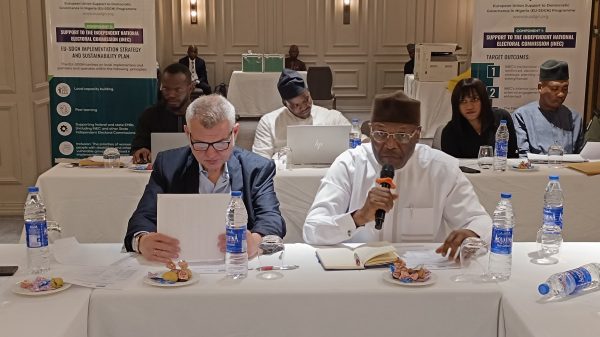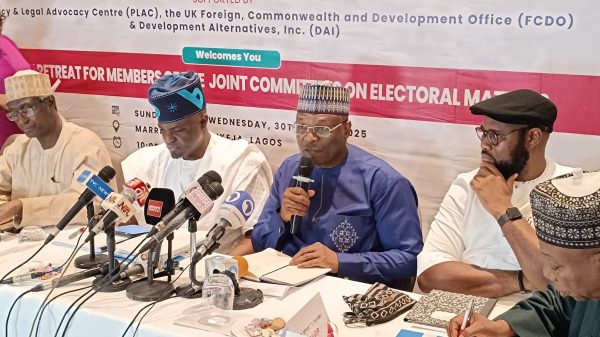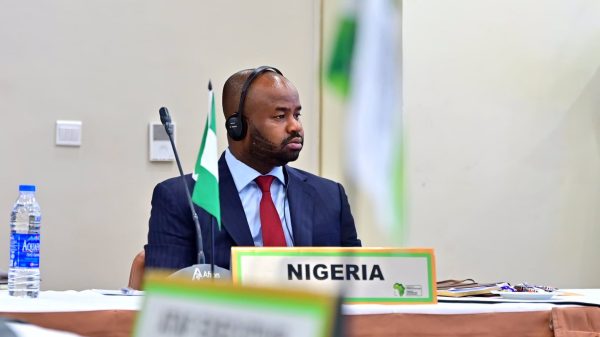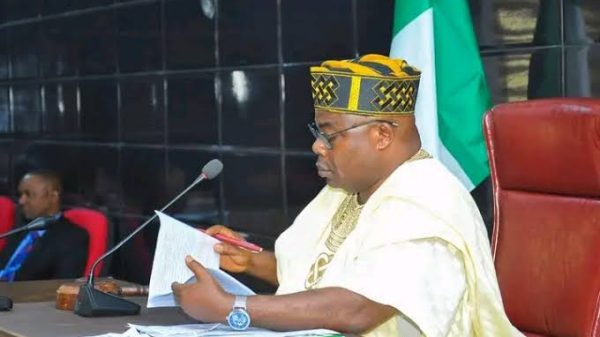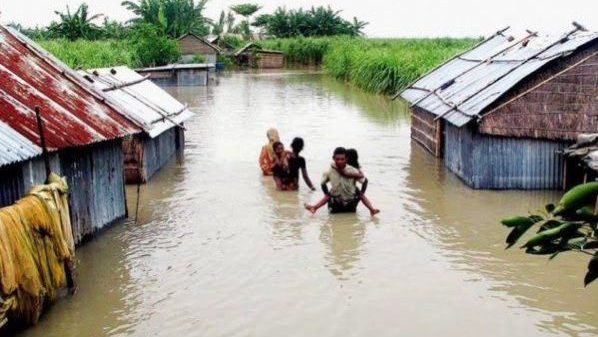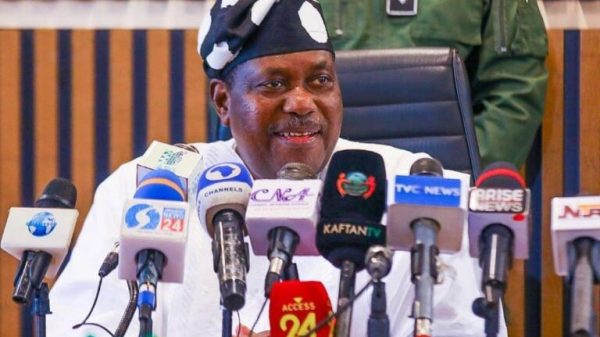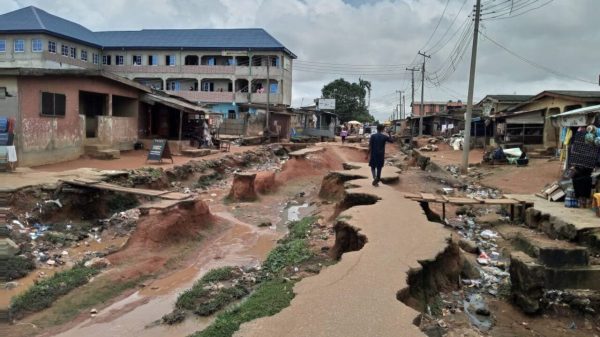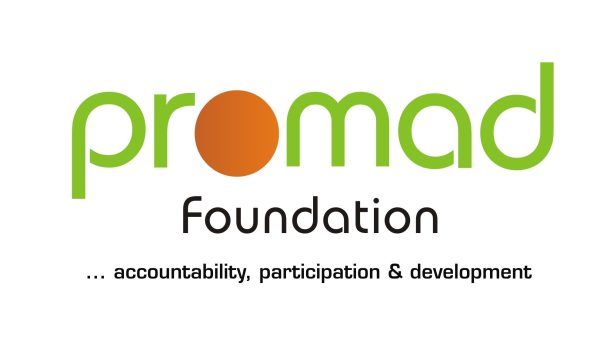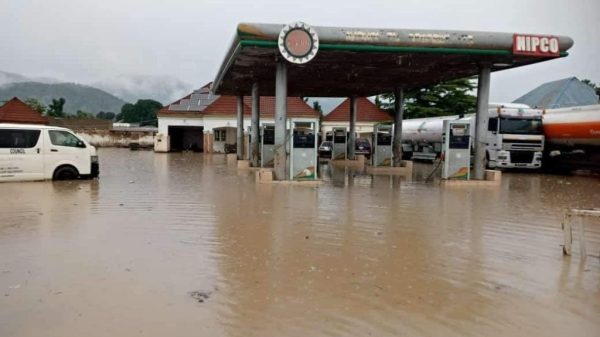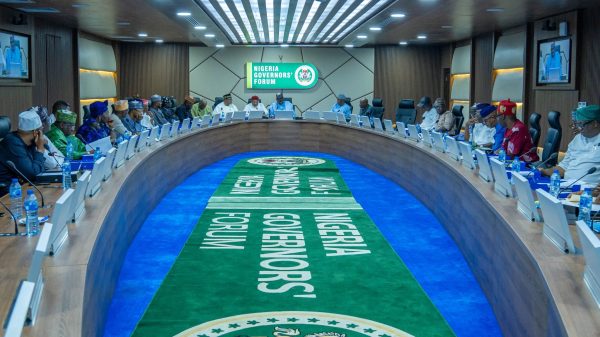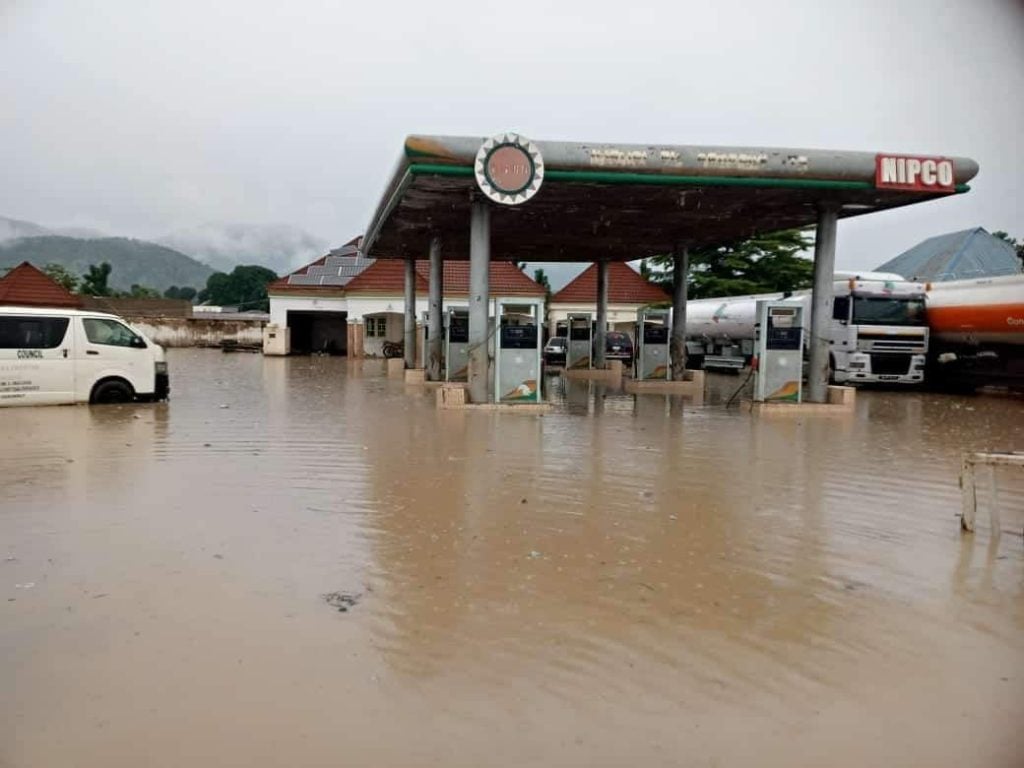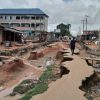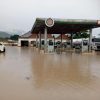Abuja, Nigeria
No fewer than thirty-two states and the Federal Capital Territory (FCT) are predicted to witness heavy rains and possible flooding in 2025.
This is contained in the 2025 Annual Flood Outlook (AFO) released by the government last week in Abuja.
According to the report, Abia, Adamawa, Akwa Ibom, Anambra, Bauchi, Bayelsa, Benue, Borno, Cross-River, Delta, Ebonyi, Edo, Gombe, Imo, Jigawa, Kebbi, Kogi, Kwara, Lagos, Nasarawa, Niger, Ogun, Ondo, Osun, Oyo, Rivers, Sokoto, Taraba, Yobe, Zamfara and FCT were identified as high-flood risk states.

Joseph Utsev, Minister of Water Resources and Sanitation, said some states in the south-south geopolitical zone would experience coastal and riverine flooding due to a rise in sea level.
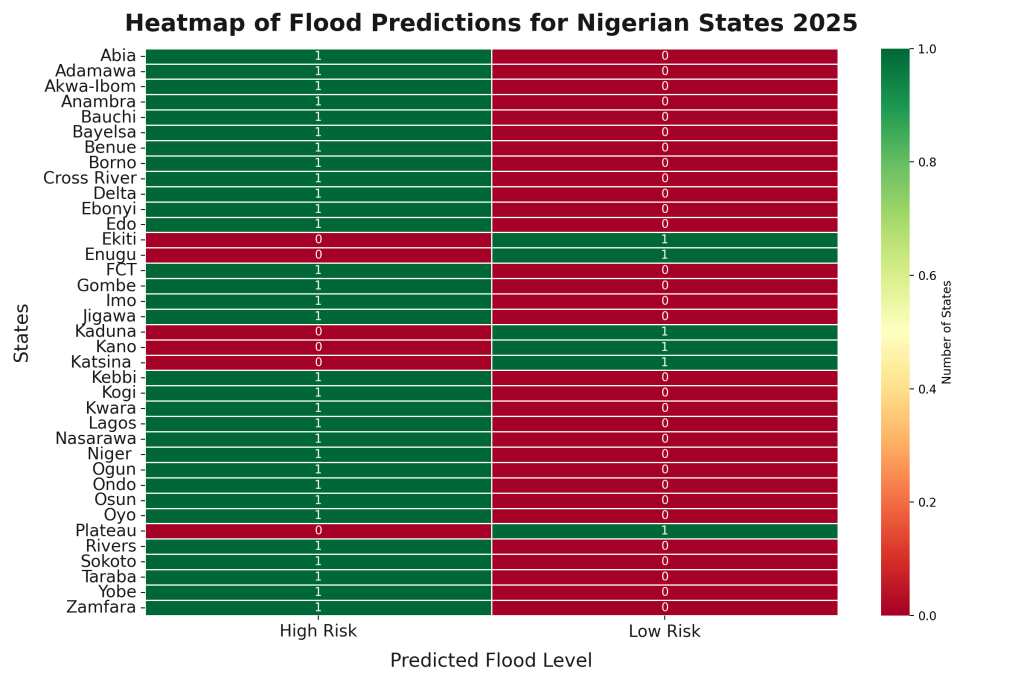
Among these states are Bayelsa, Cross River, Delta, and Rivers while Akwa-Ibom and Edo fall under the high-flood risk states.
The 2025 Annual Flood Outlook (AFO) was segmented into three parts to address the pressing challenges of flood disasters and provide information for mitigation, especially in the most vulnerable communities.
According to the minister, flooding remained one of the most devastating natural disasters in Nigeria, but climate change was accelerating its frequency and severity.
He revealed that 1,249 communities in 176 Local Government Areas (LGAs) across 30 states and the FCT fall within high-risk flood zones this year, while an additional 2,187 communities in 293 LGAs face moderate flood risks. Key risk areas include Abia, Benue, Lagos, Bayelsa, Rivers, and Jigawa, among others.
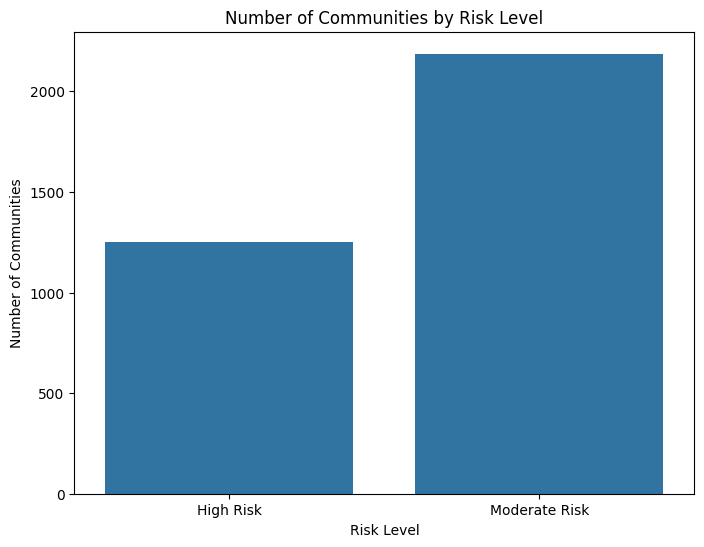
To improve early warning and response systems, this year’s AFO introduced a community-based flood forecasting approach. Rather than just general predictions, forecasts are now tailored to specific communities, enhancing actionable communication and preparedness at the grassroots level.
Richard Pheelangwah, Permanent Secretary of the Ministry of Water Resources and Sanitation, during his remarks, urged stakeholders to prioritize early response. “This outlook isn’t just about numbers, it’s about protecting lives and livelihoods,” he said.
The Director General of NIHSA, Umar Mohammed, noted that this year’s flood forecast goes beyond mapping LGAs and now identifies specific communities at risk.

“Our focus has expanded to assess sectoral impacts, on health, education, agriculture, and infrastructure, offering more robust tools to policymakers and disaster risk managers,” he said.
In 2023, the 36 States shared N39.387 billion from the ecology funds in the year 2023 from the Federation Account Allocation Committee (FAAC) to tackle erosion and ecological problems.






